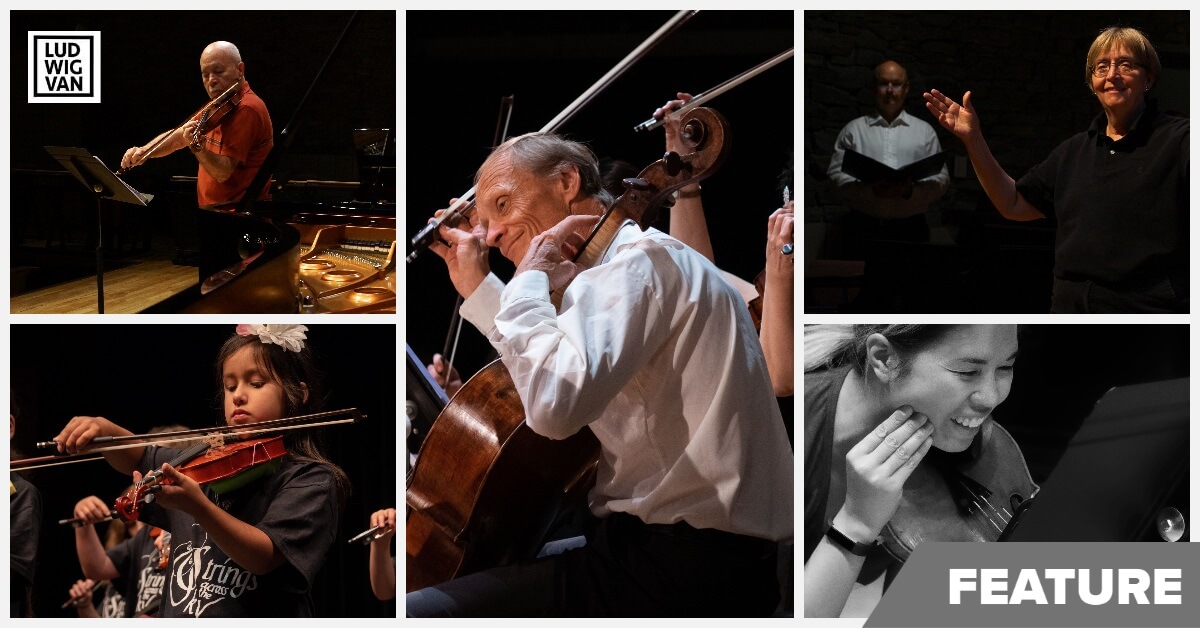
When so much of classical music now lives in cyberspace through an ever-burgeoning wellspring of livestreamed digital events, pre-recorded solo and chamber recitals, and ubiquitous, patchwork “Zoom” quilts featuring up-close-and-personal interviews with artists hailing from around the globe, “photography” is having a moment.
Toronto-born photographer Mark Rash, whose work has been highlighted in prior Ludwig Van articles is well in tune with the power of a compelling image — and how those singular, fleeting moments captured through the intimacy of a camera lens have now become memory-soaked postcards from a pre-pandemic past.
“I am an observer. I borrow the moment, then share it,” the soft-spoken Rash states of his artistic philosophy from his Winnipeg home. “I try to document the connection between a musician and his or her music, and as audience members, we can hear the sensitivity and feel the intensity of that connection. Being allowed to fuse those elements visually helps to further reveal the players’ artistry and commitment,” he says.
“During these stressful times when we don’t have that opportunity of experiencing a live performance, we can still see that emotional connection that musicians have with their music through an image, and that brings us along with them into their interpretative worlds,” Rash adds of today’s current ethos.
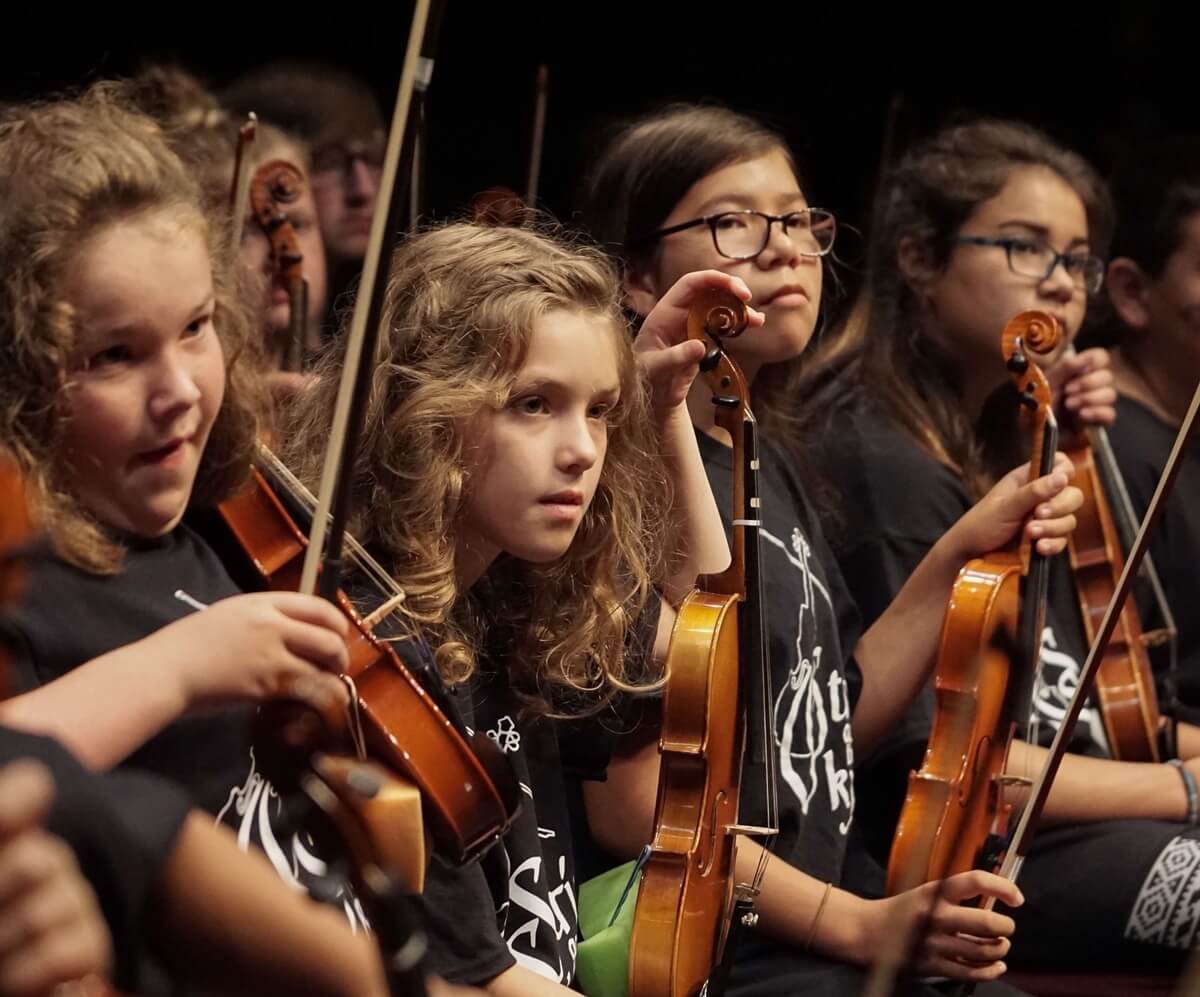
The humble, intensely private artist who arguably flies below the radar — preferring to let his images do the talking — has served as official photographer for the now 41-year old Festival of the Sound (FotS) since 2015, the three-week long event customarily held each July in the idyllic Parry Sound, ON, as well as shooting another four years with Winnipeg’s Agassiz Chamber Music Festival (ACMF) that similarly springs to life in the Prairie city each June.
He has photographed many of the world’s elite, crème de la crème artists including James Campbell, Janina Fialkowska, Guy Few, Stewart Goodyear, Paul Marleyn, and Jamie Parker, as well as internationally renowned chamber groups: The Gryphon Trio, New Zealand String Quartet and Lafayette String Quartet, among many others.
However the mostly self-taught artist, now in his late 60s and also a fierce intellectual, hasn’t exactly followed a typical path to the rarefied world of fine arts, with his artistic proclivities surfacing early. While in his teens, his late father Harry and now 96-year old mother Goldie, as well as older sister, critically acclaimed Toronto writer and author Barbara Rusch, purchased a working dairy farm that included 127 Holsteins, located in the now amalgamated city of Galt, Ontario.
A then 15-year old Rash would travel every weekend from their family home in Canada’s largest metropolis to the pastoral countryside to milk cows and clean barns, slipping off to Stratford in the evenings to catch a play by his favourite bard, Shakespeare. He also spent countless hours devouring Keats’ poetic odes, or listening to the classical music he adores, citing Schubert’s eloquent string quartets among his favourite works.
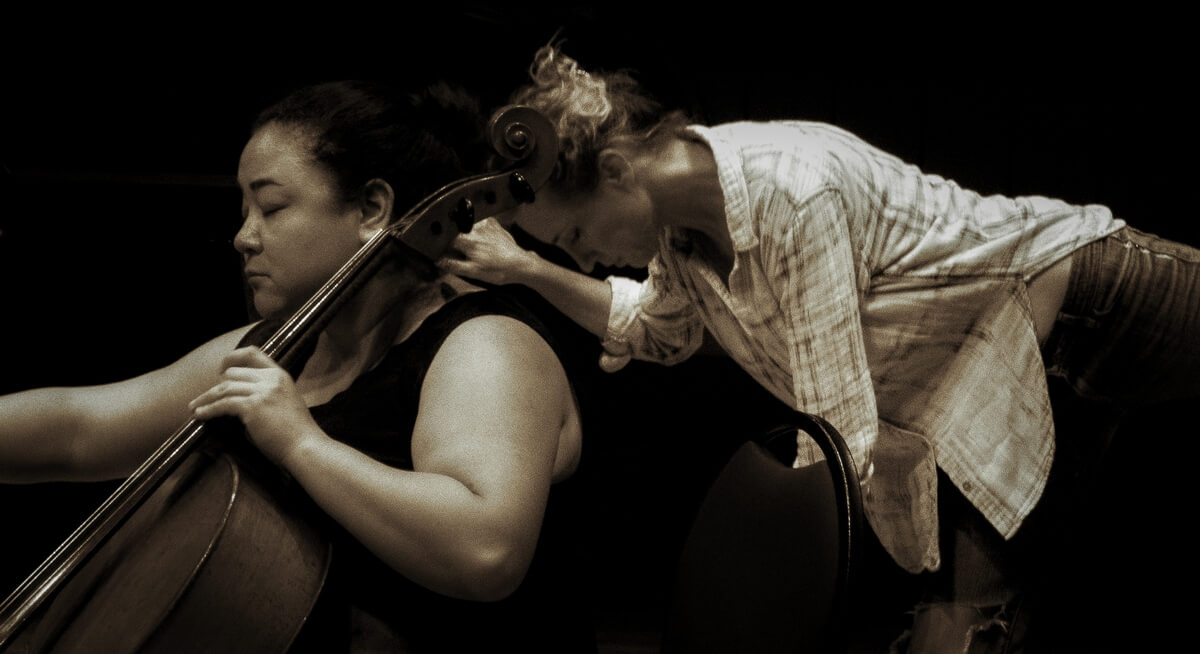
He later ventured to Parry Sound for three summers to ride horses, rope steer — he can still throw a mean lasso — even learning how to ride rodeo, while working at the Manitou Wabing Camp of Fine Arts where he taught horseback riding and water skiing. The starry-eyed teen performed violin briefly in one of the camp’s three orchestras that regularly accompanied its musicals, as well as notably serving as concertmaster back in Toronto with his high school orchestra.
Rash credits taking a darkroom course at the Vancouver Community College while living in the coastal province between 1986 to 1997 for first igniting his passion for photography, leading to a fledgling photo shoot with ballet dancers from Ballet British Columbia.
As a quintessential Renaissance man and entrepreneur, Rash taught computer sciences at the University of British Columbia while simultaneously studying Political Science at that same institution. Perhaps inspired by his earlier Stratford days, he self-produced his own play, Viva Voce, co-written with Canadian actress and Stratford fixture, Mia Anderson, at Ottawa’s National Arts Centre in 1975, commemorating the centenary of the Supreme Court of Canada. After eventually moving to Winnipeg for family reasons, Rash now earns his living in a variety of ways, including writing, business and software development projects, and keeps in touch with his 26-year old son Alex, now following in his footsteps and pursuing studies in creative writing and Japanese at UBC.
Juno-award winning Canadian clarinetist and FotS artistic director James Campbell is one of Rash’s biggest fans. It was Campbell who invited Rash to bring his camera to the 2015 festival. He was so taken by those mesmerizing images that it led to his formally appointing Rash as official festival photographer the subsequent year.
I am an observer. I borrow the moment, then share it.
“It’s basically because Mark’s photos are so good,” Campbell reveals when asked what initially drew him to Rash’s pictures. “He has a great love and understanding for music and a wonderful ear that allows him to take the photos that he does. He anticipates a photo like a musician who knows where a chord or a pattern is going, and somehow senses that in movement,” he says.
“He also has a deep humility and respect for artists, and is able to discover those moments that come out naturally in the performers. What you’re seeing is the actual reality of those interactions either in rehearsal or onstage,” the musician elaborates, before offering perhaps the ultimate compliment of all. “He becomes one of the players.”
Performing music has always been a curious alchemy of paradoxically immersing oneself into an innermost, emotional landscape while simultaneously projecting that same experience outwardly to an audience. Rash is first to admit he’s been given a privileged front row seat to those highly intimate moments arising through the process of music-making. He once patiently waited silent and still for a full 45 minutes as pianist Janina Fialkowska rehearsed onstage to document a particular, candid image — he never asks artists to pose — that he could only imagine in his mind’s eye, and literally took his breath away when it actually happened.
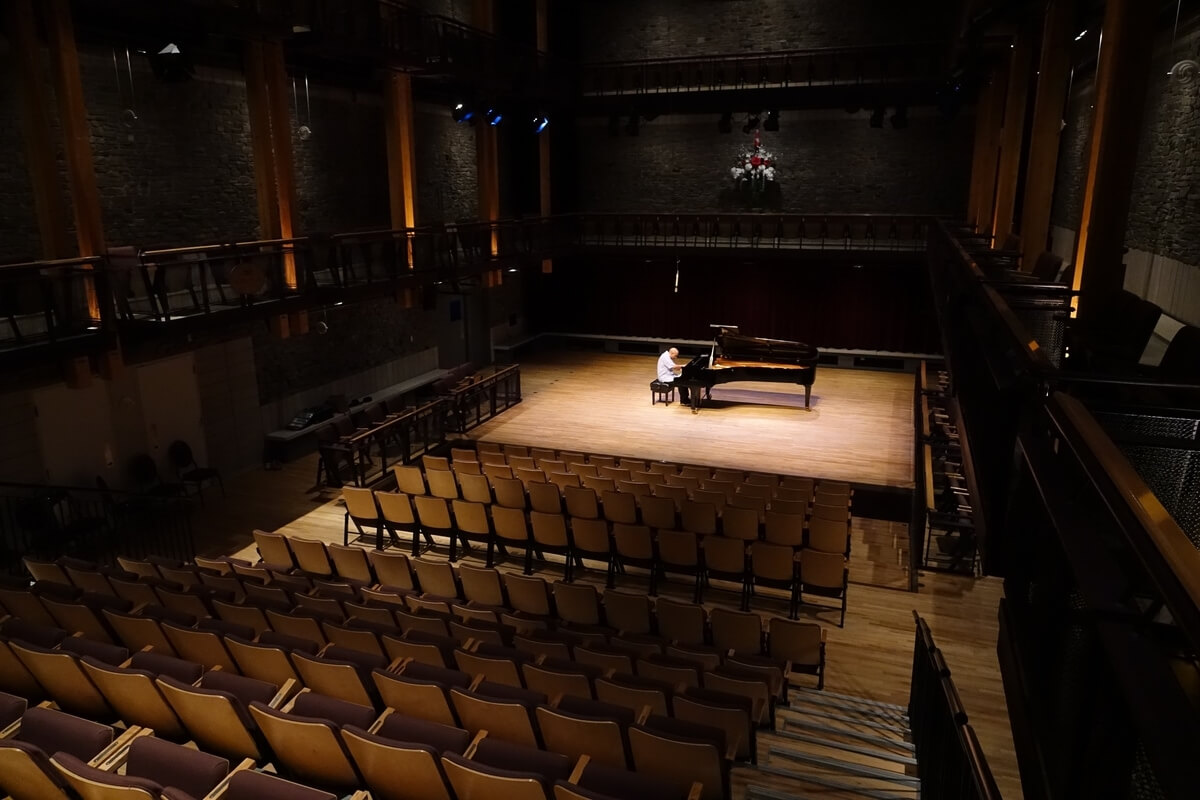
“Everything is done with enormous respect, and an awareness of boundaries,” he explains of his approach. “It’s also an instinctive process as you see begin to see how a musician reacts, or interacts both with the music and their instruments: their head position, or how they close their eyes or the shape of their embouchure. You have to build trust with the musician and that only comes with time,” he says.
“I try to create a sympathetic vibration with the artist, and when I step into the photographic moment, my camera becomes a reflection, or an overtone or resonance with the music that they’re playing. What I’m trying to do is reveal some of the internal life of the player that an audience wouldn’t necessarily see.”
However he agrees that some of those moments are just too personal, too emotionally raw for his watchful lens, as artists bare their souls through their music — whether in rehearsal or during performance.
“If that happens, I don’t wish to intrude with my camera, and want to become fully immersed and swept away by the experience. I’d rather capture those moments in my heart, than on film,” he says with reverence.
One of Rash’s pivotal artistic influences comes a surprise. He recalls becoming gobsmacked after seeing an exhibition of British pop legend Sir Elton John with his Toronto-born husband David Furnish’s personal collection of historic photographs at London’s Tate Modern Gallery in November 2016. He nipped out to Royal Albert Hall to witness an epic performance of Berlioz’s Requiem with 550 onstage musicians, including five massed choirs, marking Remembrance Day that year.
What I’m trying to do is reveal some of the internal life of the player that an audience wouldn’t necessarily see.
“I was absolutely astounded by the beauty of their artistry, and learned about form and composition, lighting techniques, resolution and focus from the photos,” he says, spending nearly four hours in the gallery as he eagerly lapped up their eclectic imagery.
“A good photo is different from a snapshot in that it draws you in and speaks to you. It’s like a painting that’s telling a story and with a universal appeal. There are also some photographs that simply immobilize you, and you don’t know why. I want to answer that question.”
Much closer to home, he also credits his longtime friend and mentor, acclaimed Toronto painter and visual artist, and former professor at York University, Judy Singer for honing his aesthetic sensibility and helping to further develop his photographic career.
“Mark being an incredibly, deeply curious person, and a person who loves to learn and expand his world took all those principles of composition, and how to look at ‘art’ that I taught to him, and applied it to his photography. He really got it,” Singer assures over the telephone from her summer cottage. “Because he’s also so smart, he understands the technical side of photography so it’s a very powerful knowledge. He feels things deeply, and I find his photography emotional and really beautiful,” she said.
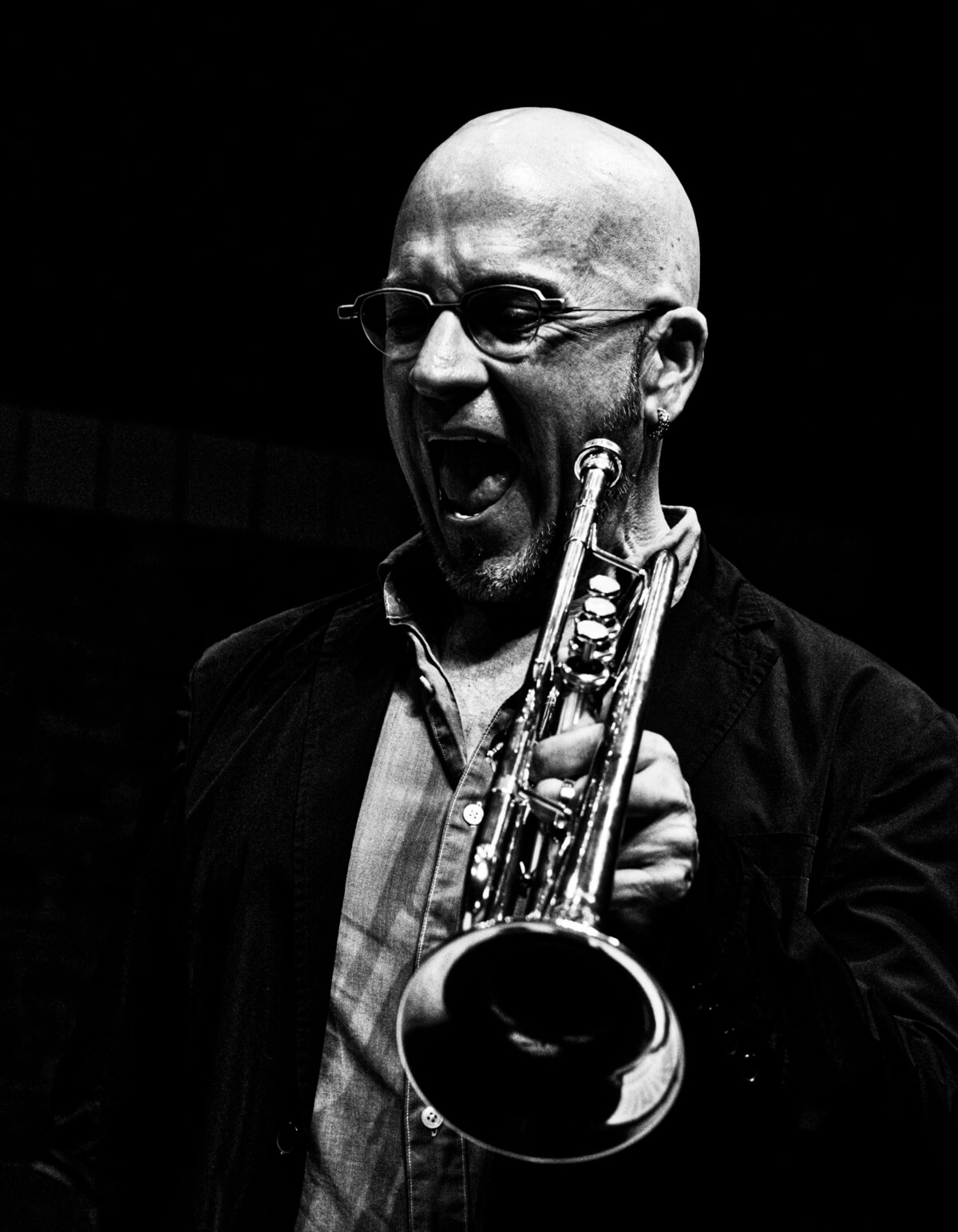
Spend a little time with Rash, and the word “family” repeatedly pops up like a leitmotiv. He frequently calls the musicians whom he shoots regularly both in Parry Sound and in Winnipeg his second family, and that has engendered an even greater, requisite trust between artist and muse.
An evocative photo of Rash’s parents looms high from a living room bookshelf at his home. It’s their wedding portrait, taken in 1945 at Armenian-Canadian photographer Yousuf Karsh’s Ottawa studio (although not by Karsh himself, Rash quickly notes), their faces shining with hope and promise. The haunting image not only represents the roots and bedrock for Rash’s own artistic expression, but has also inspired him to take his own creative journey in photography — his parents’ visages a prelude for his own compelling, photography.
“It’s technically magnificent. That picture is capturing a moment in time that will never happen again,” he says of the image that bears the iconic Karsh imprint, describing it poetically as, “an entrée to the imagination.”
“However, when I photograph musicians, it’s ultimately a sharing experience…. I am merely documenting something which is always there, as opposed to something never to be repeated again,” he explains.
He’s been inspired by the work of 20th century French artist Henri Cartier-Bresson, considered a master of candid photography, as well as late Dauphin, Manitoba-born, Toronto-based musician, music critic and radio broadcaster Kenneth Winters. Winters once said of Canadian photographer Walter Curtin that he, “tries to catch music in the act of its being made,” calling it “Music Visible”.
I tell them, ‘Look at the joy in your eyes.’
But, it goes even deeper than that. In an often broken world hungry for beauty in what can be dark shadows of despair — and that now includes a raging pandemic still galloping around the globe — he’s keenly aware of the potency of his art form to inspire, console, illuminate, and ultimately give hope.
“We need to perceive beauty, and especially now because it’s still all around us. You can find beauty in the smallest image, with a powerful photograph connecting you kinesthetically, emotionally and spiritually to a certain moment in time,” Rash states.
“Musicians often don’t realize there’s a physical, visual component that is also very much a part of the experience,” he adds. “I tell them, ‘Look at the joy in your eyes.’ Look at the excitement and how inspired you look, and how in turn that inspires others.
“Like Winters, I am also trying to make music visible, as I believe that humanizing the efforts of these great musicians can bring the audience that much closer to them,” he says. “That’s all I want to do.”
#LUDWIGVAN
Want more updates on classical music and opera news and reviews? Follow us on Facebook, Instagram or Twitter for all the latest.
- GUIDE | Ontario Summer Music Festivals 2022 - July 1, 2022
- INTERVIEW | Sheku Kanneh-Mason On Reuniting With Family For Toronto Debut - May 2, 2022
- FEATURE | How The Royal Conservatory Avoided A Disaster - June 9, 2021



